|
|
 |
|
September 30, 2009
As the days grow shorter and we bid goodbye to summer, it’s time to--well, it’s time to start thinking about next summer! Honestly, it isn’t too early to sign up for the 2010 International Pinot Noir Celebration, an immensely popular weekend in Oregon devoted to wonderful wines, fabulous food, and an all around great, good time. When I was at the celebration this year, I observed that at the end of the weekend people were already signing up for next year’s IPNC. fabulous food, and an all around great, good time. When I was at the celebration this year, I observed that at the end of the weekend people were already signing up for next year’s IPNC.
Let me give you an idea of what it’s like. Obviously, the focus is on Pinot Noir. One of the world’s oldest known grape varieties, it produces a beguiling, tantalizing wine that is revered for its unique ability to embody both strength and delicacy. Only a few regions in the world can grow Pinot grapes successfully, and most of those regions are represented at IPNC. The two-day event is always held on the campus of Linfield College, in tiny McMinville, located in the heart of Oregon’s Willamette Valley wine region. It’s by no means a glitzy event--most people stay in the college dorms, though others arrange for accommodations in local B&B’s--but the very informality of the housing reflects the laid-back, unpretentious spirit of the occasion. The only thing that’s truly grand is the wine. Although the event is studded with stars from the world of wine, they seem to relish the relaxed atmosphere that allows them to rub elbows and clink glasses with consumers. A shared passion for the wine levels the playing field.
At this year’s event (the 23rd IPNC gathering) Jancis Robinson was the Master of Ceremonies. Among the host of other knowledgeable speakers were Steve Doerner (from Oregon’s Cristom Winery), François Millet (Burgundy’s famed Domaine Comte Georges de Voguë), and David Schildknecht (co-author of the 7th edition of Robert Parker’s Wine Buyer’s Guide, and contributor to The Oxford Companion to Wine). More than 60 winemakers, from Austria to New Zealand, were in attendance (with their wines).
As always, the event was designed to maximize guests’ interaction 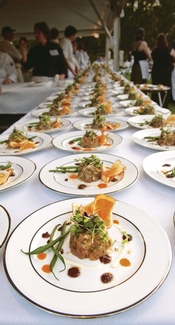 with winemakers. Seminars and tastings are interspersed with visits to various wineries for lunches prepared by acclaimed Pacific Northwest chefs. I had lunch at Erath Winery, where Adam Bernstein, from Adam’s Sustainable Table in Eugene, OR, prepared a stunning alfresco feast that began with smoked Columbia River sturgeon, and oysters on the half shell garnished with rosé sorbet (a surprising combination but a wonderfully refreshing treat on a very hot day). We had Oregon tuna carpaccio, followed by duck breast with duck confit hash and foie gras torchon. There was more, much more, with verticals of Erath’s fine wines throughout the meal. with winemakers. Seminars and tastings are interspersed with visits to various wineries for lunches prepared by acclaimed Pacific Northwest chefs. I had lunch at Erath Winery, where Adam Bernstein, from Adam’s Sustainable Table in Eugene, OR, prepared a stunning alfresco feast that began with smoked Columbia River sturgeon, and oysters on the half shell garnished with rosé sorbet (a surprising combination but a wonderfully refreshing treat on a very hot day). We had Oregon tuna carpaccio, followed by duck breast with duck confit hash and foie gras torchon. There was more, much more, with verticals of Erath’s fine wines throughout the meal.
One of the mysteries of IPNC is how the assortment of guest chefs at Friday night’s Grand Dinner manage to feed the masses such delicious fare with so few glitches. The pace is slow, to be sure, but what a succession of farm-to-table courses there was, including pork rillettes with spiced cherries, smoked Penn Cove mussels, stuffed saddle of lamb with shell bean piperade, and lemon pound cake with mascarpone and local berries.
The highlight of the IPNC event for many of us is always the Saturday night traditional Northwest salmon bake. Picture this: wild salmon roasting on alder stakes over a huge custom-built fire pit, lanterns twinkling overhead in the branches of the oak trees, carvers slicing up grilled bavette steaks sauced with ancho chili-romesco sauce. There are miles and miles of tables groaning under the weight of platters and bowls heaped with impeccably prepared salads, pastas, breads and veggies. And then there is the wine! Among the Oregon Pinots that filled my glass early on was the fabulous Patricia Green “Ribbon Ridge” (‘05), luscious Drouhin (‘06), lovely Anam Cara “Mark II” (‘07), hugely flavorful Bethel Heights “Flat Block” (‘06)…and then I stopped taking notes. Everyone had brought bottles of wine, from France, California, Australia. It wasn’t all Pinot now, but a riotous mixed selection of special Rieslings, Bordeaux, both red and white Burgundies--wines that guests and vintners had prized out of cellars for the occasion, some of them shipped halfway around the world, others carried a couple of miles from the local winery. The music was fun, the desserts sublime, and the crowd mellow. I’m already dreaming of the next IPNC…and if you are interested as well, visit www.ipnc.org
Posted by Marguerite Thomas at 9:35 AM
|
|
September 29, 2009
 As Director of several major wine competitions, I'm frequently asked what makes a wine a gold-medal winner. Judges typically use whatever scoring/rating method they would use in their professional wine evaluations, but they still need guidelines that reflect the standards of the competitions that have invited them to adjudicate. As Director of several major wine competitions, I'm frequently asked what makes a wine a gold-medal winner. Judges typically use whatever scoring/rating method they would use in their professional wine evaluations, but they still need guidelines that reflect the standards of the competitions that have invited them to adjudicate.
I thought it might be enlightening to publish the guidelines I gave the judges prior to their tastings last weekend at the Sommelier Challenge in San Diego. (Click here for complete results).
Here goes:
Sommelier Challenge Judging Guidelines
1. This is a blind tasting. Wines will be evaluated absent information about producer, vintage or price.
2. Because wines have been submitted from the world over, judges may ask questions pertaining to origin so that wines can be evaluated in context.
3. Judges should take into account the fact that winemaking styles vary. A wine that is well made within an accepted style should be judged accordingly.
4. At least two Somms will take a look at each wine entered. The judges may compare notes, but their votes should be independent and reflect their personal opinion regarding the wine being evaluated.
5. Votes will be taken at the conclusion of each flight and recorded by the table monitor.
Silver Medal
A silver medal should be awarded to wines that are well made, absent flaws, and pleasing enough that you wouldn’t hesitate to pour it for a guest.
Gold Medal
A gold medal should be awarded to wines exhibiting outstanding intensity of flavor and/or complexity. While palate weight can be a positive factor in the evaluation, more delicate wines that possess exceptional nuance should not be overlooked for gold-medal consideration. Mineral-driven and fruit-driven wines should be given equal consideration. A gold-medal wine should leave the judge with an extremely positive overall impression.
Best of Show/Platinum
Any wine that a judge believes would be competitive for best in its class should be put forward for the Best of Show round of judging. After all wines have been judged, we will taste those nominated for best red, best white, best sparkling, best rose, best dessert and best fortified. All wines nominated for Best of Show will automatically be elevated to a Platinum medal.
If you believe a wine has a chance at best in its class, don’t be bashful!
|
|
September 24, 2009
I always cringe a bit when anyone attempts to draw parallels between New World Pinot Noir and red Burgundy. There are but a handful of exceptional terroirs for Pinot outside of Burgundy – Oregon, coastal California, New Zealand’s south island, and a narrow patch of Australia from Victoria to Tasmania – and each produces wines that are unique, and outstanding in their own right.
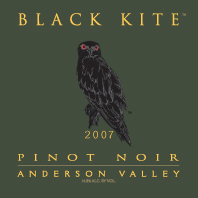 Few measure up, however, when compared to grand cru Burgundy, the pinnacle of Pinot Noir excellence. That rare combination of elegant tannin, powerful structure, remarkable depth, penetrating aroma and delicate nuance would seem to be the private domain of the great grand cru vineyards of the Cote d’Or. Few measure up, however, when compared to grand cru Burgundy, the pinnacle of Pinot Noir excellence. That rare combination of elegant tannin, powerful structure, remarkable depth, penetrating aroma and delicate nuance would seem to be the private domain of the great grand cru vineyards of the Cote d’Or.
There are exceptions, of course, and our intrepid W. Blake Gray stumbled into one recently, which is the subject of his WRO column this month. The 12-acre Anderson Valley vineyard of Black Kite Cellars, I would argue, is the equivalent of a Burgundian grand cru.
It is, quite simply, one of the most spectacular pinot noir vineyards in the New World. I discovered Black Kite a little more than three years ago, after winemaker Jeff Gaffner’s first vintage. The Black Kite Pinots were amazing then; they are just as good, maybe better now.
I recently tasted through the entire lineup – the vineyard is divided into several distinct blocks – and will publish my reviews over the next few weeks. One wine really blew me away, though: the 2007 Angel Hawk ($75, 97 points). This is a new wine for Black Kite, and only 73 cases were made.
“I cherry-picked from the individual blocks to make Angel Hawk,” Gaffner told me recently.
Much as I hate to admit this, I closed my eyes and let my imagination wander . . . La Tache, Griotte-Chambertin, Le Romanee, Richebourg . . . indeed, Black Kite Angel Hawk is that good.
Posted by Robert Whitley at 10:34 AM
|
|
September 22, 2009
One of the attributes I admired most about the winemaker Craig Williams during his long reign at Joseph Phelps Vineyards was his reluctance to accept the status quo.
Phelps, of course, was famous for Insignia, the iconic Bordeaux-style blend that came to be synonymous with excellence in American wine. Despite the insatiable demand for Insignia and heaps of glowing accolades, Williams was never satisfied. He always thought he could do better.
 Over the years the team at JPV spared no expense to source the finest fruit in its quest to upgrade Insignia. That level of dedication is common in the wine business, where the passion for quality runs deep. Your life's work is right there in a bottle, for all to judge. Over the years the team at JPV spared no expense to source the finest fruit in its quest to upgrade Insignia. That level of dedication is common in the wine business, where the passion for quality runs deep. Your life's work is right there in a bottle, for all to judge.
So I wasn't all that surprised when Randall Grahm, a winemaker I've respected and admired for nearly a quarter-century, suggested over lunch that he still had much work to do at Bonny Doon.
Grahm's wines have always been aces in my book. For one thing, his winemaking style is one that appeals to me. His wines show great respect for the fruit, but they are not fruit bombs. There are elements of earth and minerals, and juicy acidity. They cellar well and are fairly priced.
Yet Randall's not satisfied. He believes he can do better. Read more about this in this in my Creators Syndicate column here.
Posted by Robert Whitley at 10:01 AM
|
|
September 18, 2009
I was very curious about the wine industry’s take on the crash of the high-end wine market, which was the highlight of a financial symposium Thursday in Napa.
Seems half the folks expect prices to rebound after the recession ends, and half don’t. I don’t pretend to be an expert on wine marketing, but it’s my sense the consumer rebellion against outrageously priced wines is here to stay. I lay out my reasons over at Whitley On Wine.
I’m convinced the consumer rebellion has had an impact on wine at every price point. I recently spent ten days in Napa and Sonoma and came away with the frightening conclusion that there’s blood in the water. Some of these guys, particularly those who bought into the vintner lifestyle at the height of the market, are in serious trouble and likely won’t make it.
I’m more concerned, however, for the grape growers who won’t be able to sell their grapes this year because wineries are cutting back on production. Or those growers who will have to drop the price per ton to levels that make their businesses unprofitable.
I’m also worried about the little guys who’ve priced their wines reasonably only to see the downward spiral from the top tier engulf them as well.
A seismic shift is looming in the wine industry because the price bubble has finally burst. This is all good for the consumer. The windfall, however, does not come without excruciating pain at the production end.
Take stock now, for the landscape will likely change before your very eyes, before you even know it.
Posted by Robert Whitley at 10:33 AM
|
|
September 17, 2009
 Speaking of wine competitions, which were the subject of my column last week, I have an exciting new event on the horizon -- the Winemaker Challenge. Speaking of wine competitions, which were the subject of my column last week, I have an exciting new event on the horizon -- the Winemaker Challenge.
This event in January 2010 will be staged with winemakers as the judges, a la the Critics Challenge (wine journalists only) and the Sommelier Challenge (sommeliers only).
I've spent the past week or so rounding up winemakers, and just today got a commitment from Merry Edwards, a winemaker whose career spans the evolution of modern California winemaking
I blog about Merry over at Whitley On Wine, and it's safe to say I'm happy to have her on board. The Winemaker Challenge also has lined up another historically significant winemaker in Gary Eberle, who introduced the first syrah cuttings to Paso Robles in the early 1970s.
 Other winemakers signed up this far include Hans Backhoff of Baja California's famed Monte Xanic; Jac Cole of Spring Mountain Vineyards; Amy Butler, who has been doing wonderful things at Paso Robles' newish Edward Sellers; Adam LaZarre of Paso's Villa San-Juliette; Cuvaison's Steven Rogstad; Etienne Cowper of Wilson Creek; Duncan Williams of Fallbrook; a tentative yes from Jeff Gafner of Saxon Brown, who, by the way, makes an incredible semillon; the wizard Clark Smith of WineSmith; and the globetrotting Dave Stevens of Davon International. Other winemakers signed up this far include Hans Backhoff of Baja California's famed Monte Xanic; Jac Cole of Spring Mountain Vineyards; Amy Butler, who has been doing wonderful things at Paso Robles' newish Edward Sellers; Adam LaZarre of Paso's Villa San-Juliette; Cuvaison's Steven Rogstad; Etienne Cowper of Wilson Creek; Duncan Williams of Fallbrook; a tentative yes from Jeff Gafner of Saxon Brown, who, by the way, makes an incredible semillon; the wizard Clark Smith of WineSmith; and the globetrotting Dave Stevens of Davon International.
Posted by Robert Whitley at 2:40 PM
|
|
September 15, 2009
If you know the name Bob Pepi, you're probably really thinking of his father, the late Robert Pepi, who founded the Pepi winery in Napa Valley and later sold it to Jess Jackson.
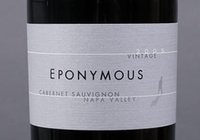 Bob Pepi, the son, was the Pepi family winemaker and was on the scene when Pepi built its reputation on exceptional sauvignon blanc and a bevy of Cal-Ital varietal wines that have been more or less abandoned since Pepi, the winery, entered the Jackson fold and became a ubiquitous bargain brand. Bob Pepi, the son, was the Pepi family winemaker and was on the scene when Pepi built its reputation on exceptional sauvignon blanc and a bevy of Cal-Ital varietal wines that have been more or less abandoned since Pepi, the winery, entered the Jackson fold and became a ubiquitous bargain brand.
Bob Pepi made his own way as a consultant, overseeing winemaking for Argentina's Valentin Bianchi, among others, and founded a brand of his own, Eponymous. There are two wines in the Eponymous portfolio, a Napa Valley cabernet sauvignon, and a red Bordeaux-style blend from the MacAllister vineyard on the Sonoma Valley side of Mount Veeder.
The first Eponymous was the 2000 Napa Valley Cabernet Sauvignon. The MacAllister Vineyard Red Wine made its debut with the 2003 vintage. They retail for $65 and $45, respectively; extremely good values in the world of high-end, hand-crafted boutique Napa and Sonoma red wines.
I caught up with Pepi on a recent visit to Napa and tasted through every vintage of the Napa cabernet that is currently available -- seven vintages, 2000 through 2006. This after visiting the vineyard source, located near the Pepi family compound at the base of Atlas Peak, about a mile south of the famed Stag's Leap District, in the southern end of the Napa Valley.
The vineyard next door produces Silver Oak's cultish Twomey Merlot. Clos du Val and Chimney Rock are just a short piece up the road. This is a very good neighborhood for cabernet and merlot, with poor, rocky soils. The Eponymous Napa cabernet is as much a reflection of its terroir as Pepi's deft touch. The structure and minerality combined with sun-kissed California fruit are a rare combo in Napa cab.
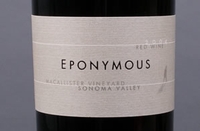 The great winemaker Tony Soter was Pepi's mentor, and there is a similarity in their winemaking style. When it comes to cabernet, that would be a wine that exhibits bright fruit aromas, supple tannins and exquisite balance, all of which was evident in the seven-year vertical I tasted with Pepi in early September. The great winemaker Tony Soter was Pepi's mentor, and there is a similarity in their winemaking style. When it comes to cabernet, that would be a wine that exhibits bright fruit aromas, supple tannins and exquisite balance, all of which was evident in the seven-year vertical I tasted with Pepi in early September.
The oldest of the lot, the 2000, was in superb condition and clearly has much life left in those aging bones. It is a cabernet of substance and complexity, much like the very underrated cabernets Bob Pepi made at Pepi before his departure. The other six vintages were impeccably made. On the same day I also had the opportunity to taste the 1981 Pepi cabernet, and am happy to report the patient is still alive!
I realize most wine enthusiasts are anything but collectors, generally consuming the wines they buy within hours of purchase. They could probably care less that I believe the Eponymous cab is a good deal for those wine aficionados who go to the trouble of cellaring collectible wines. To those folks I say drink up and enjoy.
To the rest of you, I say stock up. Eponymous cabernet is in it for the long haul. I truly hope to have a small stash in my cellar when it hits its stride.
Posted by Robert Whitley at 11:41 AM
|
|
September 9, 2009
A wine journalist's work is never done. There are tastings and travel, travel and tastings, tastings and more tastings, until you come to think there must be an ocean of wine out there and we're never gonna run out of the stuff. There is and we won't.
So it's a journey, and along the way, quite a bit of interesting clutter accumulates in the notebook, anecdotal evidence of profound trends begging to be revealed. I would like to think so, at least.
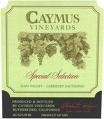 To begin, I am told by a number of wine retailers that the economy has forced the fabled Napa Valley winery Caymus to steeply discount its top wine, Caymus Special Selection Cabernet Sauvignon, from a wholesale price above $100 per bottle to about $65 (in California, at least). To begin, I am told by a number of wine retailers that the economy has forced the fabled Napa Valley winery Caymus to steeply discount its top wine, Caymus Special Selection Cabernet Sauvignon, from a wholesale price above $100 per bottle to about $65 (in California, at least).
That means you might shortly see the Special Selection cab on retail shelves for less than $100 a bottle, discounted about $70 per bottle from recent years. The discounts on iconic Napa Valley wines such as Special Selection are applying downward pressure on less expensive California cabs because the big boys are now dropping their prices into the territory occupied by cabs at the lower echelons.
The nationally "suggested retail" prices that typically accompany Wine Talk reviews are rendered somewhat meaningless until prices stabilize, but remain useful in the sense that they will help you spot the bargains at the high end should you be inclined to splurge. Thus I have recommended a number of pricy red wines this week confident that you might be able to find some of them well below the listed price.
 -- A winery to watch is Napa's Artesa, a beautiful property located in the hills of the northern Carneros district. A winemaking change has delivered the brilliant Mark Beringer (formerly of Duckhorn and Raymond) to Artesa, and changes are afoot. The Artesa wines (pinot noir, chardonnay, cabernet sauvignon and merlot) have always been of high quality and a good bang for the buck, but you can expect Beringer to kick it up a notch. He's already changed the way Artesa handles incoming grapes, moving toward the gentler gravity flow method of production — a natural since the winery is built into a hillside and the grape receiving area is at the top of the hill. He also backed off on the use oak with the 2008 chardonnay (Beringer arrived in December) in an effort to move Artesa chard toward a cleaner, more elegant style with emphasis on fruit complexity and fresh acidity. And he is chomping at the bit to ramp up the merlot and sauvignon blanc programs, which is natural considering his Duckhorn background. -- A winery to watch is Napa's Artesa, a beautiful property located in the hills of the northern Carneros district. A winemaking change has delivered the brilliant Mark Beringer (formerly of Duckhorn and Raymond) to Artesa, and changes are afoot. The Artesa wines (pinot noir, chardonnay, cabernet sauvignon and merlot) have always been of high quality and a good bang for the buck, but you can expect Beringer to kick it up a notch. He's already changed the way Artesa handles incoming grapes, moving toward the gentler gravity flow method of production — a natural since the winery is built into a hillside and the grape receiving area is at the top of the hill. He also backed off on the use oak with the 2008 chardonnay (Beringer arrived in December) in an effort to move Artesa chard toward a cleaner, more elegant style with emphasis on fruit complexity and fresh acidity. And he is chomping at the bit to ramp up the merlot and sauvignon blanc programs, which is natural considering his Duckhorn background.
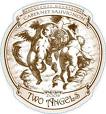 -- One of the best new wine brands in recent years has been Two Angels wines made by Bob Pepi. The Two Angels standard bearers are a petite sirah and a sauvignon blanc from the Shannon Ridge vineyard in Lake County, just north of the Napa Valley. Unlike most other mountain vineyards in California, Shannon Ridge is truly a hillside vineyard in the manner that Europe knows hillside vineyards in viticultural areas such as the northern Rhone or the Duero Valley. Planted on a steep 45-degree angle, this vineyard has naturally low yields and delivers gorgeous fruit, which Pepi crafts into superb petite sirah and sauvignon blanc at less than $20 a bottle. Don't be fooled by the screwcap closure. These are serious wines from a fabulous vineyard at very good prices given the quality in the bottle. -- One of the best new wine brands in recent years has been Two Angels wines made by Bob Pepi. The Two Angels standard bearers are a petite sirah and a sauvignon blanc from the Shannon Ridge vineyard in Lake County, just north of the Napa Valley. Unlike most other mountain vineyards in California, Shannon Ridge is truly a hillside vineyard in the manner that Europe knows hillside vineyards in viticultural areas such as the northern Rhone or the Duero Valley. Planted on a steep 45-degree angle, this vineyard has naturally low yields and delivers gorgeous fruit, which Pepi crafts into superb petite sirah and sauvignon blanc at less than $20 a bottle. Don't be fooled by the screwcap closure. These are serious wines from a fabulous vineyard at very good prices given the quality in the bottle.
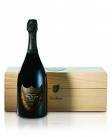 -- During this recession, Champagne sales have slipped dramatically in the United States. It has been reported, for example, that Moet-Hennessy's sales are down 28 percent this year on its multiple brands that include Dom Perignon, Veuve Cliquot, Moet & Chandon and Krug. The authority that controls production in the Champagne region, in its infinite wisdom, has decided to limit the harvest this year in a move designed to protect Champagne's high price points. I think I have a better idea: Lower the price, deplete the backed up inventory and make room for what was shaping up to be an exceptional harvest in Champagne. The current plan is nothing more than an attempt to manipulate the market as the Champagne houses did prior to the millennium celebration in 2000. -- During this recession, Champagne sales have slipped dramatically in the United States. It has been reported, for example, that Moet-Hennessy's sales are down 28 percent this year on its multiple brands that include Dom Perignon, Veuve Cliquot, Moet & Chandon and Krug. The authority that controls production in the Champagne region, in its infinite wisdom, has decided to limit the harvest this year in a move designed to protect Champagne's high price points. I think I have a better idea: Lower the price, deplete the backed up inventory and make room for what was shaping up to be an exceptional harvest in Champagne. The current plan is nothing more than an attempt to manipulate the market as the Champagne houses did prior to the millennium celebration in 2000.
And we all know how that turned out. It backfired big time!
Posted by Robert Whitley at 11:54 AM
|
|
September 1, 2009
This week’s wine reviews (to be posted Wednesday) are chock full of recommendations for modestly priced white wines that will enable you to ride out this Indian summer in style. Seems like further evidence that price is no precursor to pleasure when it comes to wine. Until we get to the Far Niente Chardonnay, which is a budget buster at $56 per bottle.
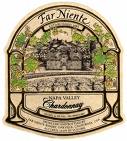 So, eyebrows raised, you may ask what it is doing in the mix. Fair question. The answer is quite simple: Sometimes you actually get what you pay for. So, eyebrows raised, you may ask what it is doing in the mix. Fair question. The answer is quite simple: Sometimes you actually get what you pay for.
Far Niente Chardonnay, more so even than the highly regarded Far Niente Cabernet, is among the finest in its league, for truly exceptional California chardonnays are fewer and farther between than exceptional California Cabernets.
What makes a great Chardonnay is a matter of taste. Some would say the rich, buttery, thick style of chardonnay produced by purveyors such as Rombauer constitute greatness. I would rather wash out my mouth with soap! Not really, but you should understand that generally speaking the oily, buttery chards are not my favorites. The exception would be a Chardonnay such as Talbott’s Sleepy Hollow Vineyard, which has enough acid backbone to balance the fatness of its fruit.
So who makes what I would consider great California Chardonnay? Kistler. Freestone. Patz & Hall, which once was in the Rombauer camp until winemaker James Hall shifted gears a few vintages back. Grgich Hills. Chateau Montelena. Nickel & Nickel. Sonoma Cutrer. There are others. And then there is Far Niente, a Napa Valley icon restored by the late Gil Nickel, a very private person and renaissance man who flamboyantly shunned the limelight.
The common threads in all of the Chardonnays I prize are finesse, balance, flavor intensity, minerality, and what I would call elegant power. These wines are not too heavy; they are not too light. They are all fermented and aged in wooden barrels, yet they don’t reek of oak. They all possess complex flavors and aromas that include fruit, earthy minerality and spice.
And importantly, especially for those of us who know the sheer pleasure of a 10-year-old chardonnay that remains fresh and vibrant, they have the ability to age if cellared properly. Your average run of the mill New World Chardonnay begins to turn a dark color and oxidize a few years after the vintage.
So when I come across one of these gems, I am compelled to share my clearly subjective point of view as well as my enthusiasm for such creations, regardless of price. These wines are invariably made in small quantities and frequently sold only to restaurants and avid collectors. You aren’t likely to find them at the grocery store.
Yet I believe you should know this: If you do find one, and you are tempted to take the plunge, just do it. Occasionally you really do get what you pay for.
Posted by Robert Whitley at 11:09 AM
|
|
 |
|